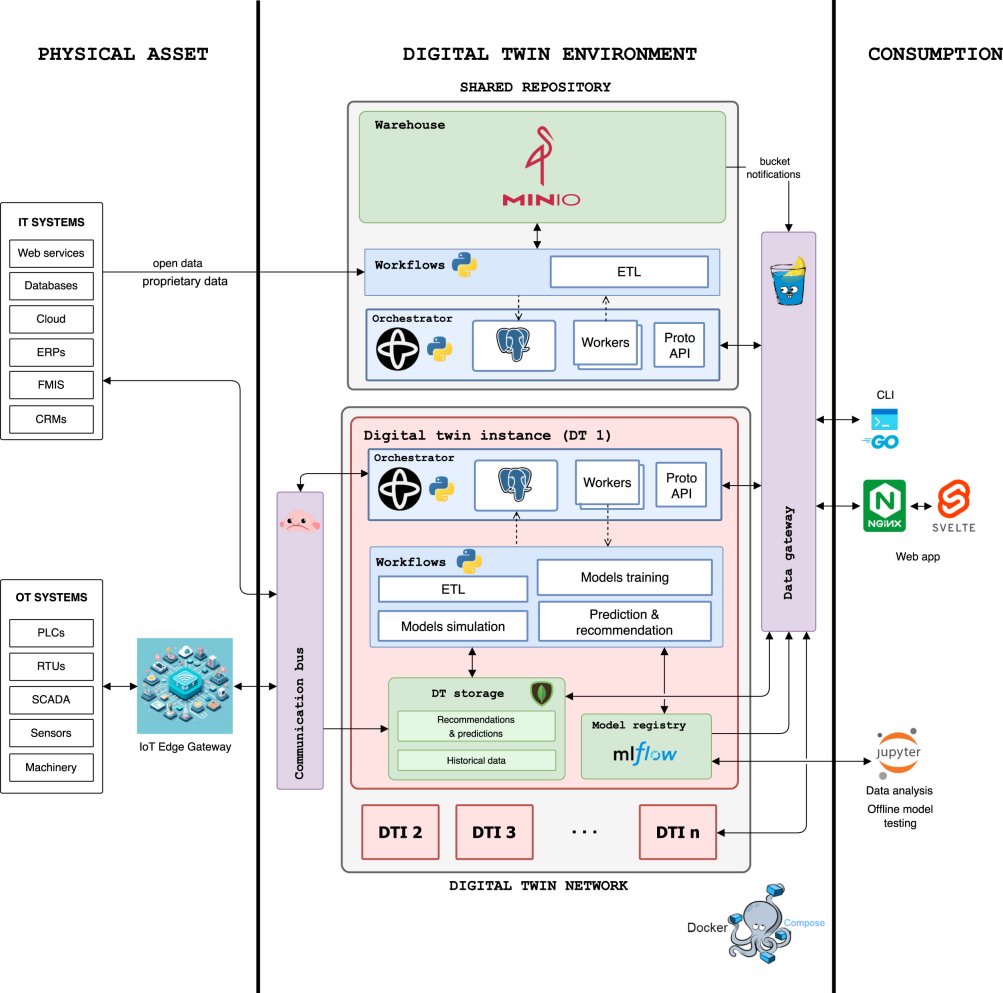Industry 4.0 has advanced in agriculture through Smart Agriculture initiatives, but open-field farming still lags in the adoption of digital twins. While digital twins have transformed manufacturing since 2011, their use in open-field agriculture remains limited by environmental variability, data scarcity, and financial constraints.

Figure 1: Conceptual architecture
Interest in agricultural digital twins is growing, yet few solutions provide fully integrated platforms, and existing systems are often too complex for non-expert users. Unlike manufacturing, where standardized processes and abundant data enable plug-and-play solutions, open-field farming operates in uncertain, highly variable environments that are difficult to model.
This paper proposes a developer-focused, data-driven digital twin platform that establishes a Digital Twin Environment where autonomous instances coexist and communicate within shared infrastructure. Rather than pursuing standardized plug-and-play models, the platform—fully open source—empowers developers to bridge the gap between technology and farmers. It integrates proprietary and open data sources into a shared data warehouse, making digital twins accessible to farms of all sizes.

Figure 3: System implementation
The proposed solution addresses four critical gaps:
- Affordability – avoids resource-intensive infrastructure unsuited to small farms, where real-time processing is less critical.
- Modeling complexity – replaces rigid physical models with flexible, data-driven methods better adapted to unpredictable field conditions.
- Scarcity of open-source tools – provides accessible, extensible solutions that match agriculture’s slower innovation cycle.
- Technology adoption – equips developers with a foundation to create farmer-oriented applications, fostering community-driven improvements.
A case study demonstrated platform efficiency on modest hardware (2 vCPUs, 4 GB RAM), with average CPU usage of 60%, RAM consumption of 2.5 GB, and deployment time of ~1 minute. These results confirm its suitability for small holdings with limited resources, lowering adoption barriers that have historically hindered digital transformation in open-field agriculture.
A platform to support the fast development of digital twins for agricultural holdings. J. LAGUNA, M.E. SUAZA-MEDINA, R. BÉJAR, J. LACASTA, F.J. ZARAZAGA-SORIA. Computers in Industry, Volume 172, November 2025, 104347, 2025.
